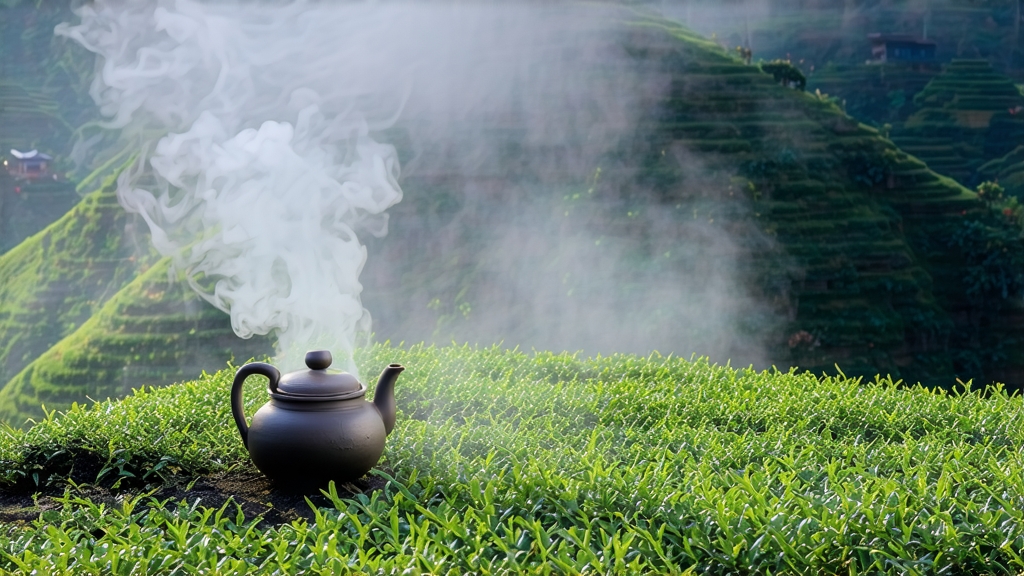
Tucked away in the humid, karst-pitted mountains of southern Guangxi, Liu Bao cha has spent four centuries quietly perfecting the art of fermentation. To most outsiders “dark tea” means Pu-erh, yet within China the connoisseur’s whispered reply is often “Have you tried Liu Bao?” Named after the administrative village of Liubao in Wuzhou prefecture, this tea once rode the rapids of the Xun River to Hong Kong and then on to Malaya, where tin-mine coolies swore it cured dampness and homesickness alike. Today the same leaf is winning cupping tables from Berlin to Vancouver, its mellow earthy liquor offering a time capsule of Chinese microbial wisdom.
History: From Imperial Tribute to Maritime Currency
The first written record appears in 1635, when the Gazette of Cangwu County lists “black-cake tea from Liubao” among imperial tributes. By the Qing dynasty the tea had become a de facto currency on the Zhū Jiāng–South China Sea trade axis; compressed baskets exchanged for rice, opium, even indentured labor. Clipper-ship logs of 1840 note that every Chinese sailor disembarking in Penang carried a bamboo-wrapped “Lao Liu Bao” brick as both wages and medicine. The British, puzzled by its resistance to mold in tropical holds, sent samples to the Indian Botanical Survey, inadvertently planting the seed that would become Assam’s post-fermentation experiments. After 1949 Liu Bao was classified as “border tea,” trucked to Tibet and Xinjiang to supplement the ethnic-minority diet, and thus remained largely unknown to Han urbanites until the 2006 pu-erh boom sent collectors scrambling for any aged dark tea. Prices for 1970s basket Liu Bao have since doubled every other year, yet the village still produces barely 2,000 tons annually—less than a single large pu-erh factory.
Micro-terroirs within 30 km
Liu Bao is not a single-garden tea; it is an appellation stitched from six historically recognized mountains—Tang Ping, Xian Ren, He Ping, Du Yang, Ji Xiong and Hei Shi—each offering a different fungal fingerprint. Tang Ping, 600 m above the fog line, yields leaves rich in Eurotium cristatum, the so-called “golden flower” also found in Hunan Fuzhuan bricks, giving a dried- longan sweetness. Du Yang’s lower, red-clay slopes encourage Brettanomyces and produce the famous betel-nut aroma that old-school Cantonese drinkers call “governor’s breath.” Since 2015 the Guangxi Academy of Agricultural Sciences has mapped 1,800 microbial isolates unique to Liu Bao, confirming that even a five-kilometer relocation of the wet-piling site measurably shifts the finished cup.
Craft: The Six Acts of Transformation
- Pluck: only Yi Qiao Yi Ye—the standard one bud plus the immediate leaf—picked from Camellia sinensis var. sinensis ecotype “Guangxi Dayezhong,” whose 12-cm leaves look comically oversized next to a Dragon-well sprout.
- Kill-green: wok temperatures are held at 160 °C for exactly four minutes; any longer and the leaf’s native yeasts perish, jeopardizing the later microbial chorus.
- Rolling: a 45-minute low-pressure roll that bruises but does not shred, preserving the cuticle for golden-flower colonization.
- Sun-withering: leaves are spread on split-bamboo mats for six hours, turned every 30 minutes so the Guangxi sun fixes a tobacco-leaf yellow.
- Wet-piling (渥堆): the signature act. Leaves are sprayed with mist from the Xun River, stacked 70 cm high under jute tarpaulins, and left to ferment for 35–55 days. Internal piles reach 58 °C; every five days a “fan dui” turning reintroduces oxygen, preventing clostridial off-notes. Masters gauge readiness by aroma alone: the scent must shift from compost to dried jujube with a whisper of star anise.
- Basket aging: the semi-dry leaves are steamed for 90 seconds, rammed into 40 kg bamboo baskets lined with wild banana leaf, then stored in riverside caves where humidity hovers at 78 %. Here the tea will rest for a minimum of three years before market, though locals insist